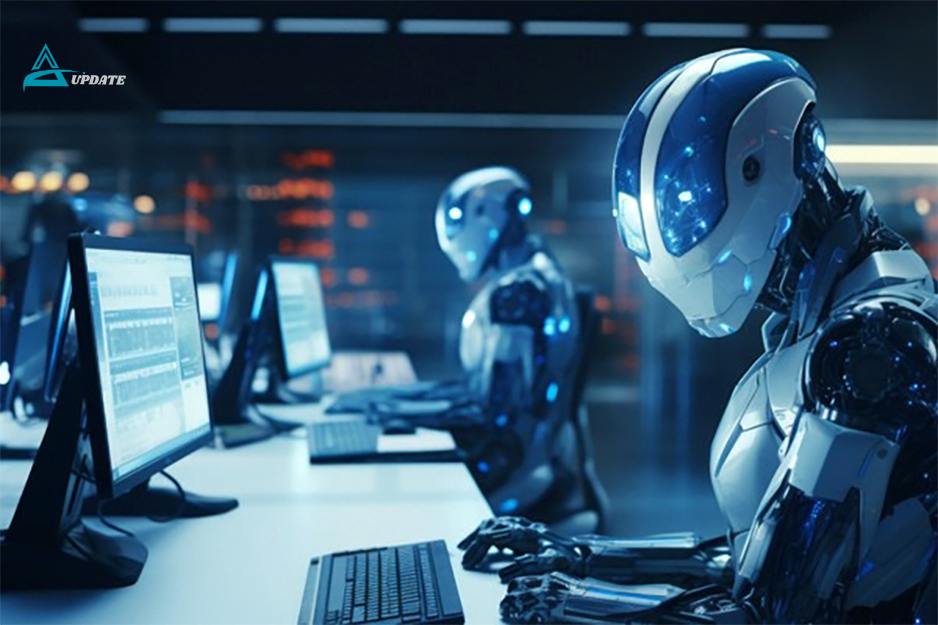In an era dominated by rapid advancements in artificial intelligence (AI) and human-computer interaction (HCI), UI-TARS emerges as a transformative innovation. Short for User Interface – Technologically Advanced Responsive System, UI-TARS represents the next generation of user interface technology. Designed to bridge the gap between intuitive user experiences and cutting-edge computational capabilities, this revolutionary system is poised to redefine how we interact with digital devices.
What Is UI-TARS?
At its core, UI-TARS integrates advanced AI, adaptive interfaces, and seamless connectivity to create a highly responsive and intelligent user interface. Unlike traditional systems that rely heavily on predefined interactions, UI-TARS utilizes real-time learning to adapt to user behaviors, preferences, and contexts.
The name “TARS” pays homage to the iconic robot in the film Interstellar, symbolizing adaptability, intelligence, and user-centric design. Similarly, UI-TARS is not a static framework but a dynamic, evolving system capable of personalizing user interactions in unprecedented ways.
Key Features of UI-TARS
. Context-Aware Functionality:
UI-TARS continuously monitors user behavior and environmental factors to tailor interactions. For example, if a user is accessing a device in low light, the system automatically adjusts brightness and color contrast without manual input.
. Multimodal Interaction:
Supporting voice, gesture, touch, and even neural commands, UI-TARS ensures accessibility across diverse user preferences. This multimodal capability makes it ideal for applications ranging from gaming to enterprise systems.
. Predictive AI:
By analyzing historical data, UI-TARS can anticipate user needs. For instance, it might suggest relevant documents during a video conference or pre-load frequently used apps during specific times of the day.
. Seamless Integration:
The system integrates effortlessly with IoT devices, cloud platforms, and third-party software. Whether it’s controlling smart home appliances or collaborating with team members on a shared document, UI-TARS acts as a universal interface.
. Security and Privacy:
With the growing importance of data security, UI-TARS employs robust encryption and decentralized storage solutions. Biometric authentication and differential privacy protocols further ensure user data remains secure.
The Technological Backbone of UI-TARS
The success of UI-TARS lies in its advanced technological infrastructure. Here’s an overview of the components that make it work:
. Neural Interface Modules:
One of the standout features of UI-TARS is its potential integration with brain-computer interfaces (BCIs). By capturing neural signals, the system can interpret user intentions and execute commands faster than conventional methods.
. Machine Learning Algorithms:
UI-TARS employs a hybrid model combining supervised, unsupervised, and reinforcement learning. These algorithms enable real-time decision-making and continuous improvement of user interactions.
. Quantum Computing:
To handle massive datasets and deliver lightning-fast responses, UI-TARS leverages quantum algorithms. This ensures scalability and efficiency even in highly complex environments.
. Natural Language Processing (NLP)
With advanced NLP capabilities, UI-TARS can understand and respond to user queries in multiple languages, making it a globally accessible solution.
. Edge Computing:
By processing data locally on devices rather than relying solely on the cloud, UI-TARS reduces latency and enhances performance. This feature is particularly crucial for applications requiring instant feedback.
Applications of UI-TARS
The versatility of UI-TARS opens up a wide array of applications across industries:
. Healthcare:
In medical settings, UI-TARS can assist doctors with real-time patient data analysis, predictive diagnostics, and surgical planning. For patients, it offers personalized healthcare recommendations and seamless communication with medical professionals.
. Education:
By tailoring learning experiences to individual students, UI-TARS transforms traditional education. Interactive lessons, virtual tutors, and immersive AR/VR environments foster engagement and retention.
. Business and Enterprise:
UI-TARS streamlines workflows by integrating enterprise software, automating routine tasks, and providing actionable insights. Its predictive capabilities improve decision-making and enhance team collaboration.
. Entertainment:
From personalized streaming recommendations to immersive gaming experiences, UI-TARS redefines digital entertainment. Its ability to adapt to user moods and preferences ensures unparalleled satisfaction.
. Smart Homes and Cities:
UI-TARS acts as a central hub for managing smart devices. Whether it’s optimizing energy usage or ensuring safety through real-time monitoring, the system enhances convenience and sustainability.
. Automotive Industry:
In autonomous vehicles, UI-TARS provides intuitive interfaces for passengers, enabling seamless control of in-car features and integration with external systems.
Benefits of UI-TARS
. Enhanced User Experience:
By prioritizing user-centric design, UI-TARS ensures that interactions are intuitive, efficient, and enjoyable.
. Increased Accessibility:
Its multimodal interaction capabilities make technology accessible to individuals with varying abilities and preferences.
. Improved Productivity:
From automating repetitive tasks to providing real-time insights, UI-TARS empowers users to achieve more in less time.
. Future-Proof Technology:
Built on scalable and adaptable infrastructure, UI-TARS is designed to evolve with technological advancements.
. Eco-Friendly Operation
With optimized resource utilization and energy-saving features, UI-TARS supports sustainable practices.
Challenges and Considerations
While UI-TARS holds immense potential, its development and deployment are not without challenges:

. Ethical Concerns:
The system’s ability to collect and analyze vast amounts of data raises questions about privacy and consent. Developers must ensure compliance with ethical guidelines and legal standards.
. Technological Barriers:
Integrating advanced technologies like quantum computing and BCIs requires significant research and development efforts. Accessibility to such technology may also be limited in some regions.
. Cost:
The implementation of UI-TARS, especially in large-scale environments, can be expensive. Over time, economies of scale may alleviate this issue, but initial costs remain a barrier.
. Resistance to Change:
Adopting a radically new interface system may face resistance from users accustomed to traditional methods. Effective training and gradual implementation can help mitigate this.
The Future of UI-TARS
The journey of UI-TARS is only beginning. As AI, quantum computing, and HCI continue to evolve, the system’s capabilities will expand exponentially. Here are some potential developments:
. Fully Immersive Interfaces:
Future iterations of UI-TARS may integrate augmented reality (AR) and virtual reality (VR) for completely immersive experiences.
. Emotionally Intelligent Systems:
By recognizing and responding to emotional cues, UI-TARS could provide empathetic and context-aware interactions.
. Decentralized Ecosystems:
With blockchain integration, UI-TARS may enable decentralized, secure, and transparent operations across industries.
. Universal Accessibility:
As costs decrease and technology becomes more widespread, UI-TARS could become a standard interface for devices worldwide.
Conclusion:-
UI-TARS stands as a beacon of innovation in the field of user interaction technology. By combining intelligence, adaptability, and user-centric design, it addresses the limitations of current systems and sets the stage for a more connected and intuitive digital future. While challenges remain, the potential benefits far outweigh the hurdles, making UI-TARS a promising cornerstone in the evolution of technology.

